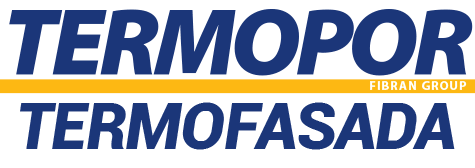Our products
Tips:
Frequently asked questions
-
How can we make the correct TERMOPOR choice for a facade?
It must be 20kg/m3 density, without any recyclable material carrying the EN EPS 100 mark.
-
What type should be the glues that are used for the facade?
- They need to be with a adhesion warranty with the thermal-insulating material.
- Durability
- Flexibility
- Easy preparation
- Pressure resistance
-
How can we avoid cracks around the windows?
During the standard netting of the facade, the diagonal opening around the openings are additionally filled with more of the same net.
-
Why it is not recommended the use of intensely dark colours on the fac
The dark colours can cause warming up in the surface, which is only concentrated on the surface layer above the thermal insulating material that additionally prevents the transient of the warmth into the walls. It manifests thermal overload and forming of so called bleak spots on the facade.
-
What is the approximate lifetime of one thermal facade?
Its lifetime depends on two factors: if the used materials are the ones specialised for the thermal facade (ex. If instead of the specialized TERMOPOR glue is used a common tile glue etc.); if the team or the company working on the facade is experienced enough. Nevertheless many of the facades are standing in function for more than 45 years, but there are also facades where problems start to occur after 2-3 months.
-
How much can you save with properly insulating the house?
According to all of the parameters and research the insulated house spends 60% less energy for heating or cooling.
-
How much is the material for 1 m2 of TERMOPOR thermal facade?
- On average 1m2 TERMOPOR thermal facade will cost you 6,50 – 8,00 €, this includes only the materials needed for the TERMOPOR thermal facade, which are:
- TERMOPOR EPS thickness: 70mm, min.
- Tipli
- RABITZ net
- MARMODOM FL 100 glue
- COKL SHINA
- KJOSH LAJSNA
- MARMODOM FL 100 ST glue
The labour costs and the costs for the final layer of the facade are not included in this price.



























